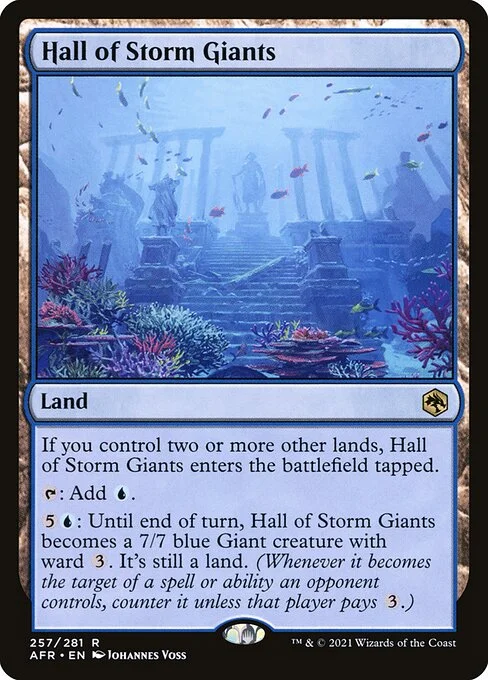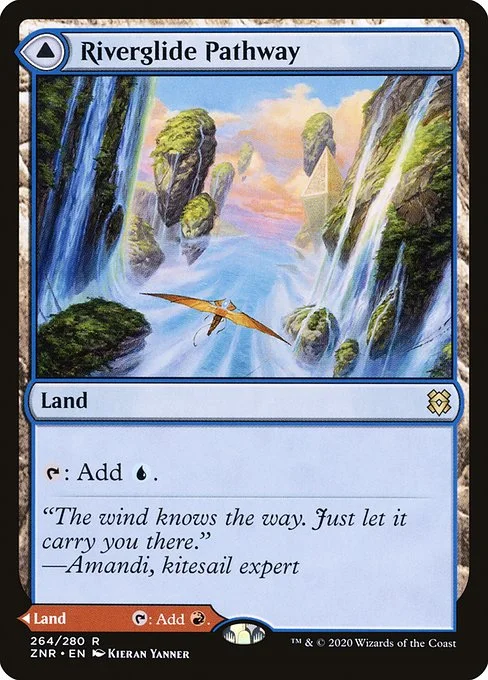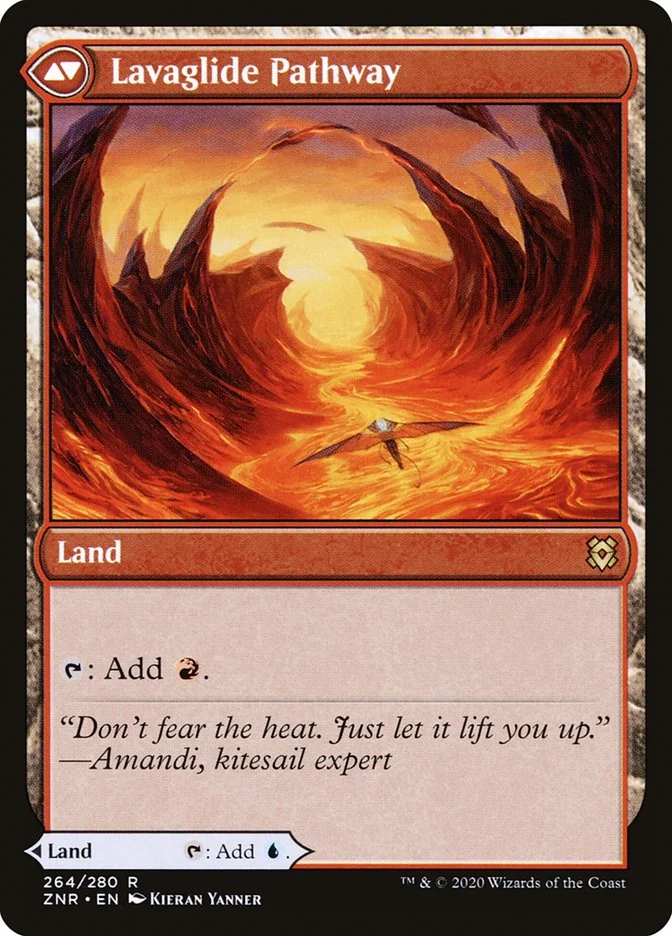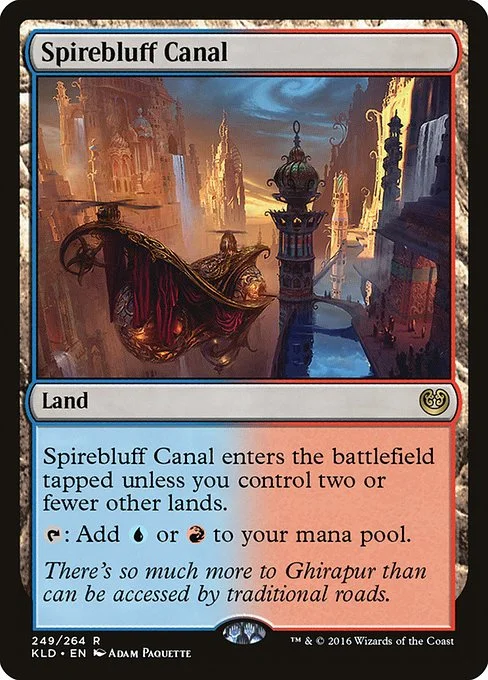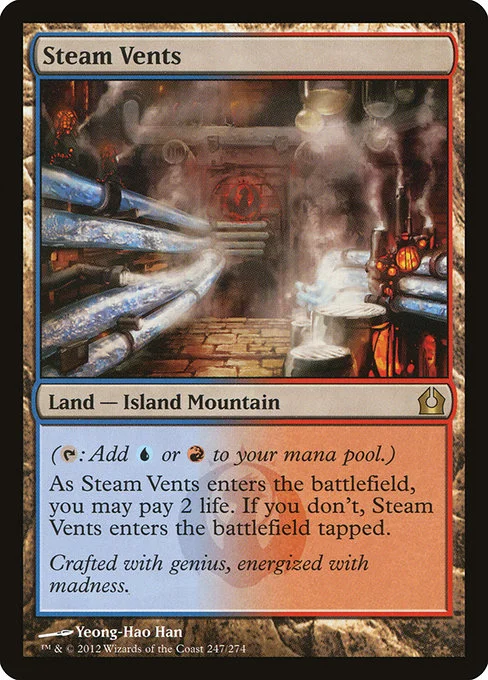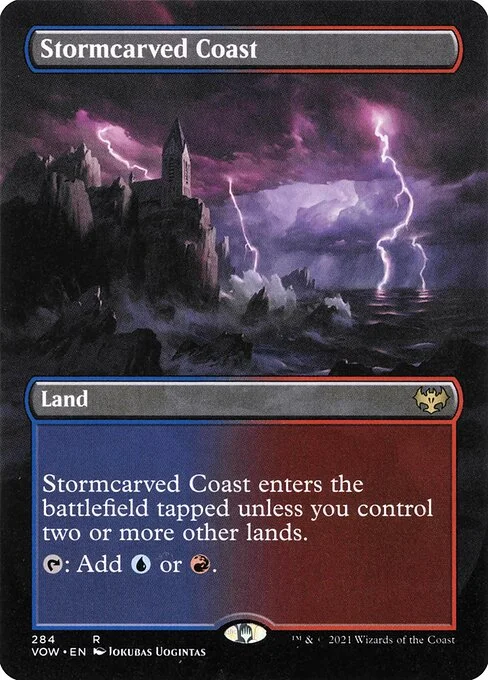🖛 This post contains ✨on-hover card images✨, indicated by the hanafuda card symbol, “🎴”, like so:
Thalia, Guardian of Thraben
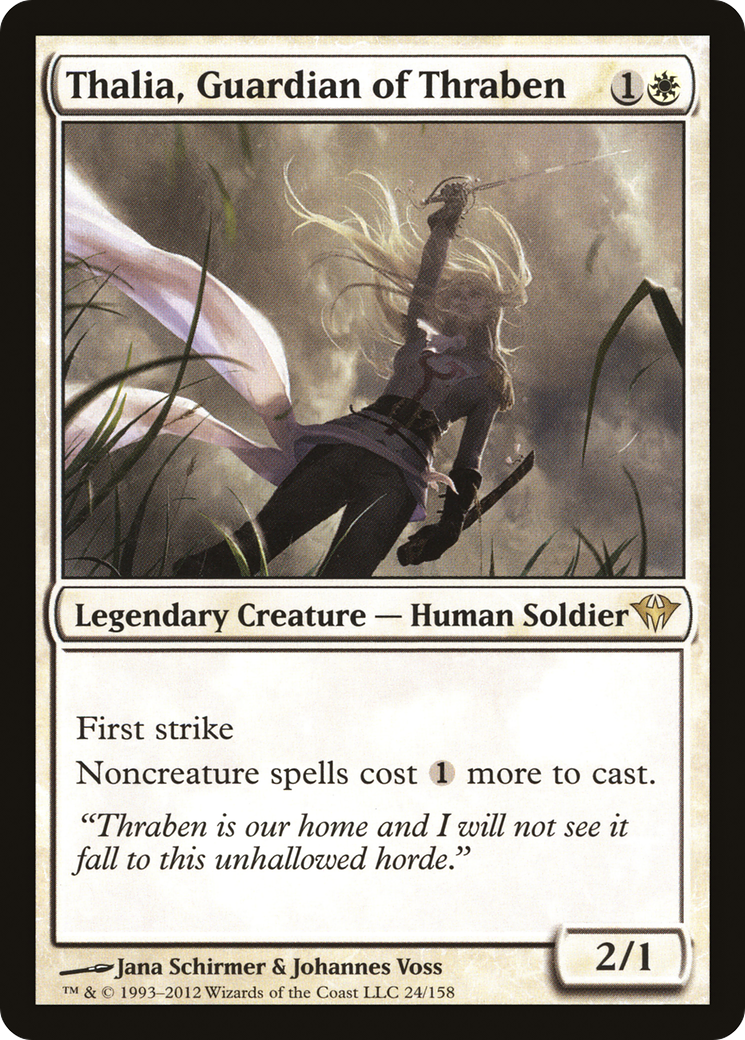 🖚
🖚
—is indulging me by trying out tournament magic. She wanted to play something reasonably competitive & not have to spend a ton & to not have to make cuts to save on budget & for there to be a local scene. She picked pioneer.
I don’t play pioneer. I am okay at magic—
I am an experienced amateur. I made mythic in each season I was active: 2019 March, 2019 May, 2019 June, 2019 July, 2019 October, 2019 December, 2023 January and 2023 May (pending). I also have an okay finish in a minor legacy tournament.
—and so I think maybe I can be helpful despite not playing pioneer. I made this overview of the format to help her pick a deck. She’s built UR Phoenix and is taking it to an event soon. I now attempt to help her sideboard. Read on for wild, uninformed speculation about UR Phoenix and the pioneer format in general.
The Deck
Note from the future: this post, like all posts from 2023, are posts I recovered from my old blog and reposted in 2025. When this post was current, it also included a link to a scryfall decklist thingy for easy exporting. In the intervening years I deleted that decklist, so, no more link.
Here’s the deck:
Main (60)
Creature (9)
Instant (21)
4
Consider
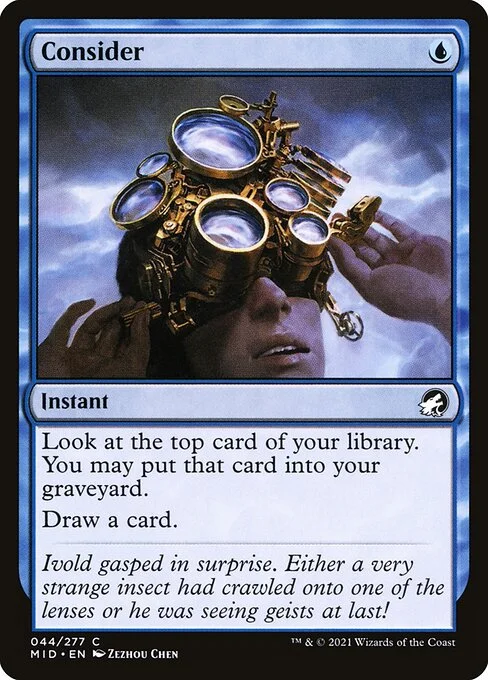
4
Opt

Sorcery (11)
Land (19)
2
Island
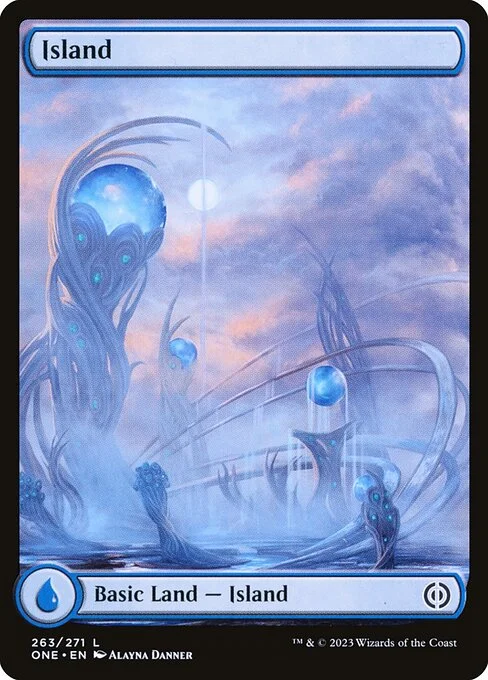
Sideboard (15)
Creature (5)
Instant (8)
2
Abrade
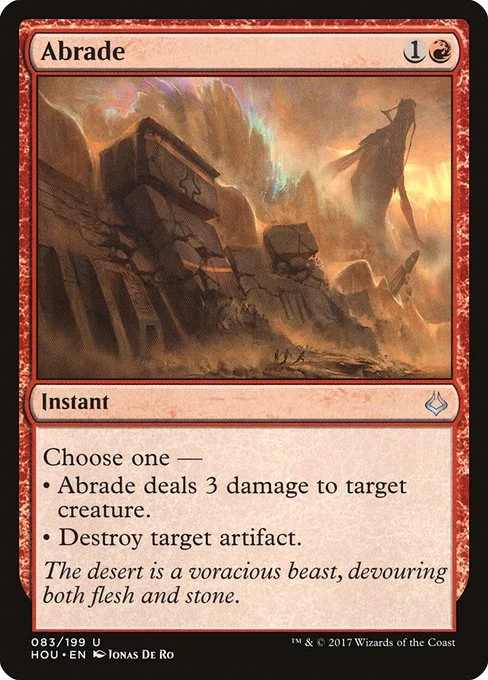
3
Fry
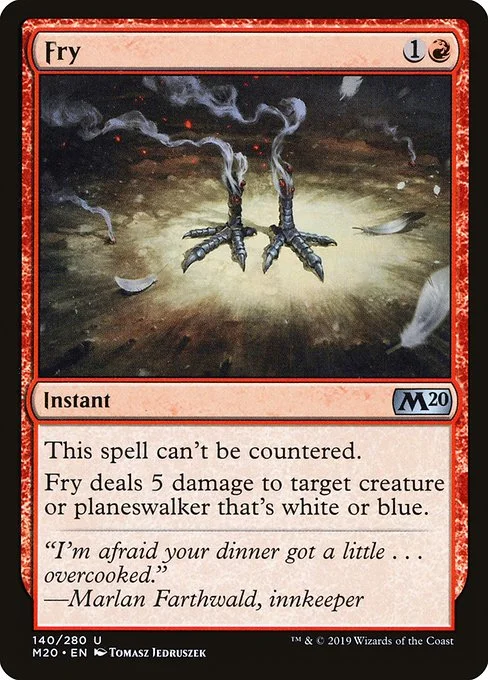
2
Negate

Sorcery (2)
General Remarks
You are a Xerox™ deck: you want to cast cheap spells, especially self-replacing ones (“cantrips”) to set up wins through
Arclight Phoenix
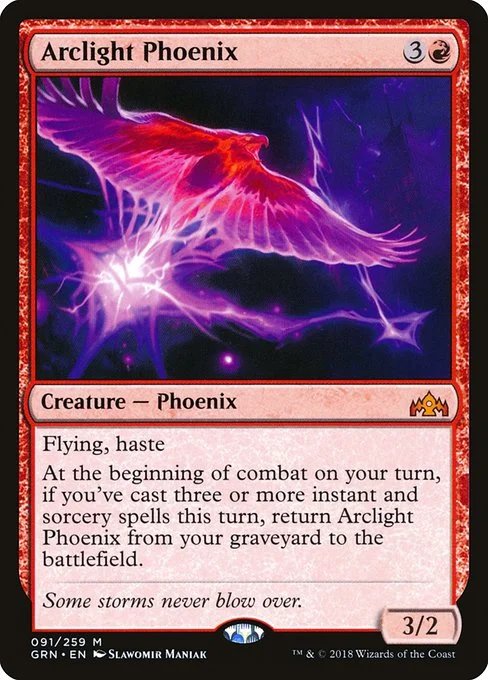 reanimations and
Thing in the Ice
reanimations and
Thing in the Ice
![Thing in the Ice {1}{U}
Creature — Horror
Defender
This creature enters with four ice counters on it.
Whenever you cast an instant or sorcery spell, remove an ice counter from this creature. Then if it has no ice counters on it, transform it.
0/4
[Transforms into: Awoken Horror]](../../images/phoenix-sideboard/soi-92-thing-in-the-ice.webp)
![Awoken Horror
Creature — Kraken Horror
When this creature transforms into Awoken Horror, return all non-Horror creatures to their owners' hands.
7/8
[Transforms from: Thing in the Ice]](../../images/phoenix-sideboard/soi-92-awoken-horror.webp) flips for the beatdown.
flips for the beatdown.
You win by being able to interact profitably since you can do things you “already wanted to do” (e.g. cast
Consider
 ) and have it move you closer to objectives like “phoenixes in graveyard” and “three precombat instants and/or sorceries” that make you win. Interacting with the opponent & trading resources with them is usually good since you have a lot of card draw / card advantage.
) and have it move you closer to objectives like “phoenixes in graveyard” and “three precombat instants and/or sorceries” that make you win. Interacting with the opponent & trading resources with them is usually good since you have a lot of card draw / card advantage.
You expect to spend the first few turns “setting up”: using the cantrips to get
Arclight Phoenix
 s in the graveyard & durdling around until you have enough lands for it to be possible to cast three spells in a turn.
s in the graveyard & durdling around until you have enough lands for it to be possible to cast three spells in a turn.
If you can, it is of course great to use the
Galvanic Iteration
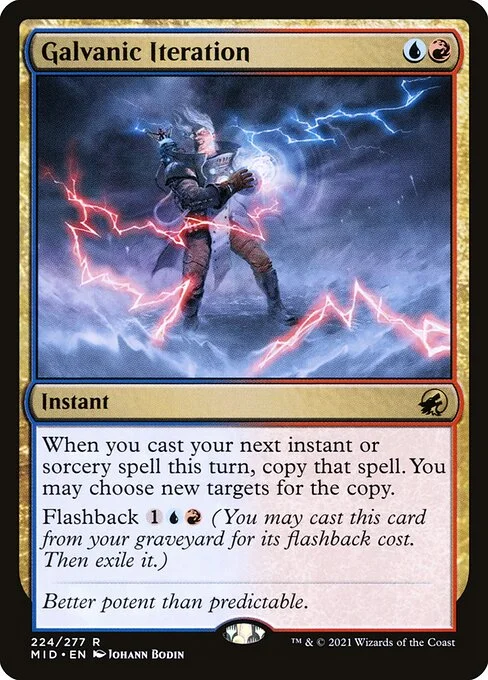 on something expensive like
Treasure Cruise
on something expensive like
Treasure Cruise
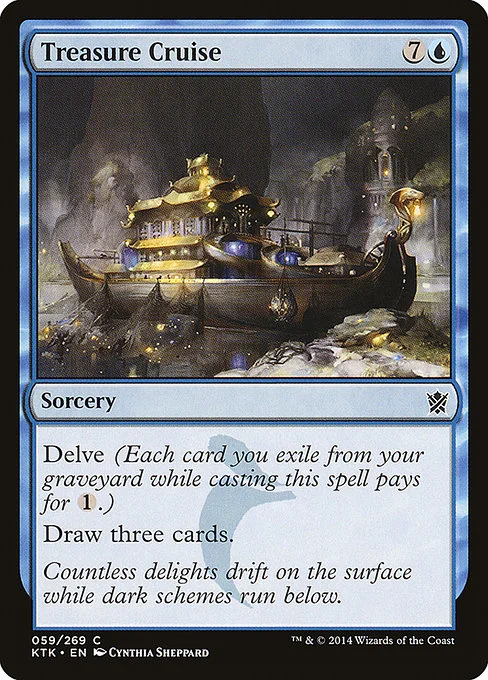 rather than a mere
Opt
rather than a mere
Opt
 , but using it on a small spell is still fine.
, but using it on a small spell is still fine.
Arclight Phoenix’ Ability And You
Arclight Phoenix
 reads:
reads:
At the beginning of combat on your turn, if you’ve cast three or more instant and sorcery spells this turn, return Arclight Phoenix from your graveyard to the battlefield.
You want to look for opportunities to cast three instants or sorceries in your turn & before combat. Your opponent knows you are trying to do this and may try to stop you.
Our Meta
Our local meta is aggro heavy, and mono-blue spirits heavy in particular. Per the matchup matrix the UR Phoenix player is actually favored if they understand the matchup well enough.
This makes sense to me:
blue is bad at exiling graveyards, so the phoenixes and delve targets are probably not going anywhere.
you can accomplish your goals by casting nothing but Opt
 and
Consider
and
Consider
 , and it’s really bad to counter an
Opt
, and it’s really bad to counter an
Opt
 or
Consider
or
Consider
 most of the time
most of the timeArclight Phoenix’ “return to play” ability doesn’t count as casting it, so it’s not like they can counter you.
Arclight Phoenix has flying, can lethally trade with most spirits most of the time, and can be gotten back. One of Spirits’ play patterns is to play one spirit, put Curious Obsession
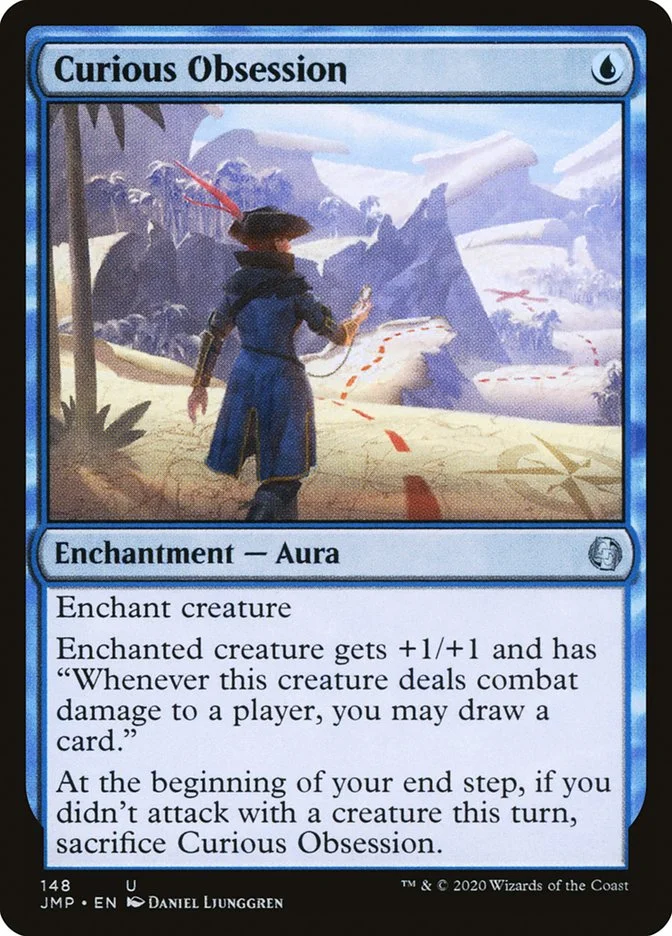 on it, then attack like ten times with it, using the extra cards to protect the spirit and counter your stuff.[ref]they’re playing like “Delver”[/ref] This is only good if they’re able to do combat damage to you.
on it, then attack like ten times with it, using the extra cards to protect the spirit and counter your stuff.[ref]they’re playing like “Delver”[/ref] This is only good if they’re able to do combat damage to you.
However: spirits has a lot of mechanics and many of them make it possible for an experienced player to trick the opponent. It’s important to know what the deck can do, so you can plan ahead around “if I do x, they might do y or z. Depending on which, I will do a or b…”. You not knowing they can give a spirit hexproof at instant speed, for example, would give them an advantage.
We’re going to tweak your sideboard to be very anti-spirits. Most Phoenix sideboards make more concessions to fighting ramp and control, but I’m not seeing these at our store.
Rules & Rulings & Conventions
The copy made by Galvanic Iteration
 does not count as “casting” a spell
does not count as “casting” a spellThe discarding done by Lighting Axe
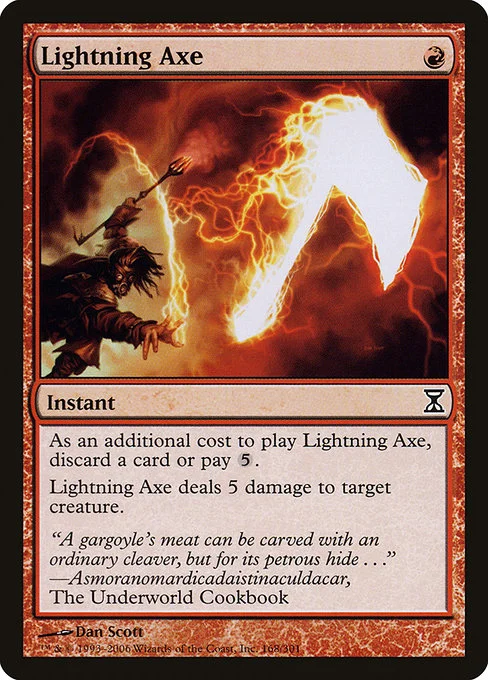 is a “cost”: it happens as you start casting the spell. So for better or worse the opponent can’t use counterspells to stop you from using
Lighting Axe
is a “cost”: it happens as you start casting the spell. So for better or worse the opponent can’t use counterspells to stop you from using
Lighting Axe
 ’s secondary cost as a discard outlet.
’s secondary cost as a discard outlet.The first thing that happens in the upkeep step is all the effects that say “at the beginning of your upkeep, do x” all go on the stack in FILO order. If you control simultaneous effects, you choose the order.
The opponent is probably not going to help you by reminding you to take counters off of Thing in the Ice
![Thing in the Ice {1}{U}
Creature — Horror
Defender
This creature enters with four ice counters on it.
Whenever you cast an instant or sorcery spell, remove an ice counter from this creature. Then if it has no ice counters on it, transform it.
0/4
[Transforms into: Awoken Horror]](../../images/phoenix-sideboard/soi-92-thing-in-the-ice.webp) or reminding you to bring back the
Arclight Phoenix
or reminding you to bring back the
Arclight Phoenix
 . Everyone misses triggers sometimes. You get a lot of win% by making sure you remember the most important ones always. This will take practice. Use visual aids.
. Everyone misses triggers sometimes. You get a lot of win% by making sure you remember the most important ones always. This will take practice. Use visual aids.- I’m going to make you a reminder card for tracking “precombat instants/sorceries cast this turn” so you keep in mind to think about whether to work towards reaching it that turn & how far you currently are. It may take getting used to; that is okay.
The stack is FILO. If you try to use a lighting axe to kill something and the opponent responds by casting Rattlechains
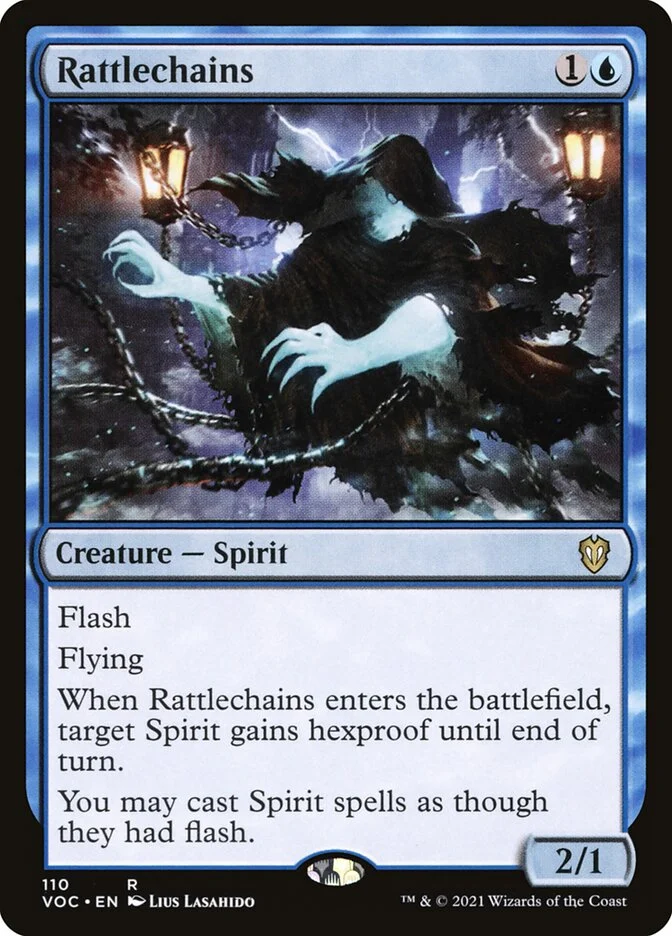 , then the Rattlechains will resolve first. Then its’ ETB hexproof-granting ability will go on the stack also ahead of the lighting axe, and by the time the axe resolves the target will have hexproof and so not get axed.
, then the Rattlechains will resolve first. Then its’ ETB hexproof-granting ability will go on the stack also ahead of the lighting axe, and by the time the axe resolves the target will have hexproof and so not get axed.“Can’t be countered” means countering it doesn’t do anything. It also means that countering-related effects such as “ward” (which usually counter stuff unless you pay the ward cost) don’t do anything.
“Can’t be countered” does not go through hexproof.
General Tips
Try to look at spending your mana in terms of “how do I make the best use of the mana I get this turn cycle. Sometimes this means doing a lot of things in your turn’s precombat main phase to try to get back the phoenixes. Sometimes it means doing a lot of things in the opponent’s end step so you get to act as late as possible and/or remove counters from a
Thing in the Ice
![Thing in the Ice {1}{U}
Creature — Horror
Defender
This creature enters with four ice counters on it.
Whenever you cast an instant or sorcery spell, remove an ice counter from this creature. Then if it has no ice counters on it, transform it.
0/4
[Transforms into: Awoken Horror]](../../images/phoenix-sideboard/soi-92-thing-in-the-ice.webp)
![Awoken Horror
Creature — Kraken Horror
When this creature transforms into Awoken Horror, return all non-Horror creatures to their owners' hands.
7/8
[Transforms from: Thing in the Ice]](../../images/phoenix-sideboard/soi-92-awoken-horror.webp) . You want to preserve optionality
. You want to preserve optionality
Notice what your opponent is trying to do. Are they spending resources on trying to find lands to make their land drops vs whether they are advancing their gameplan, etc. If they are struggling to just find their lands, be aggressive; they probably can’t counter your spell.
Failing that, do things that make the opponent play worse. Force them to make a lot of choices, so they have more opportunities to make the wrong ones. Winning is made out of scads of tiny edges and correct decisions made out of habit & reflex. People make a lot of mistakes. If you can make it look like they’re facing a critical choice, they will probably act like it and they might misplay. This works just as well if your hand is nothing but land: they may suspect a bluff, but they usually won’t know it is a bluff.
Think in terms of how many turns you are away from killing the opponent (your “clock”) and how different lines of play change or don’t change your clock. If using a burn spell on the opponent isn’t going to make them die any faster (e.g. it means they are at 1 rather than at 3) this usually means “don’t use it on them; just wait”.
Sideboarding
If killing their creatures doesn’t put you ahead then you probably don’t need things that kill their creatures. Killing a
Bloodtithe Harvester
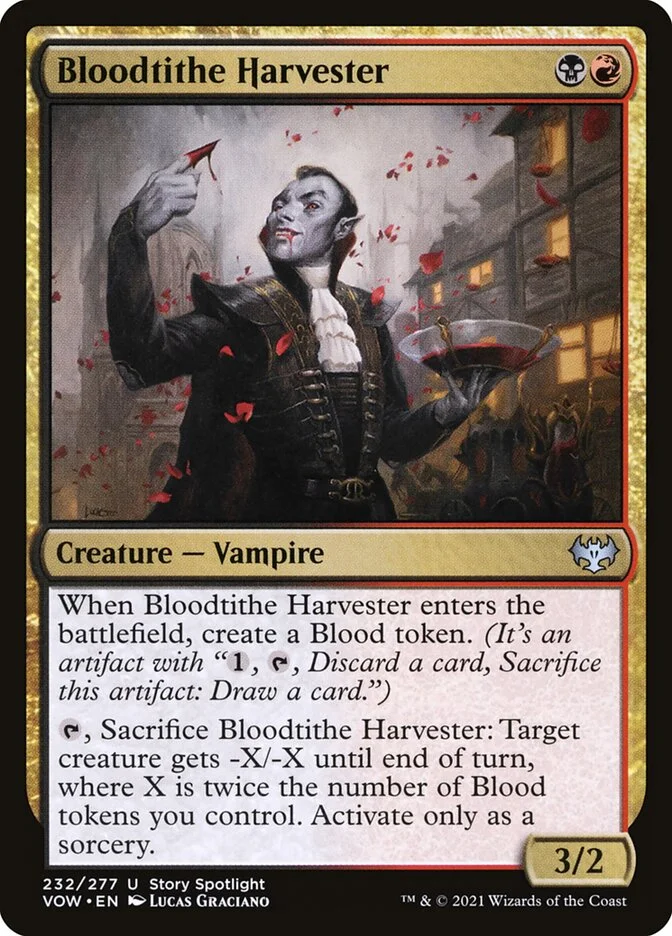 doesn’t really set them back or you forward most of the time, so consider ignoring it.
doesn’t really set them back or you forward most of the time, so consider ignoring it.
Kill their
Thalia, Guardian of Thraben
 on sight.
on sight.
They’re going to try to exile the
Arclight Phoenix
 in the post-sideboard games; consider not putting them in the graveyard unless you plan on reviving them very soon. Remember the
Brazen Borrower
in the post-sideboard games; consider not putting them in the graveyard unless you plan on reviving them very soon. Remember the
Brazen Borrower
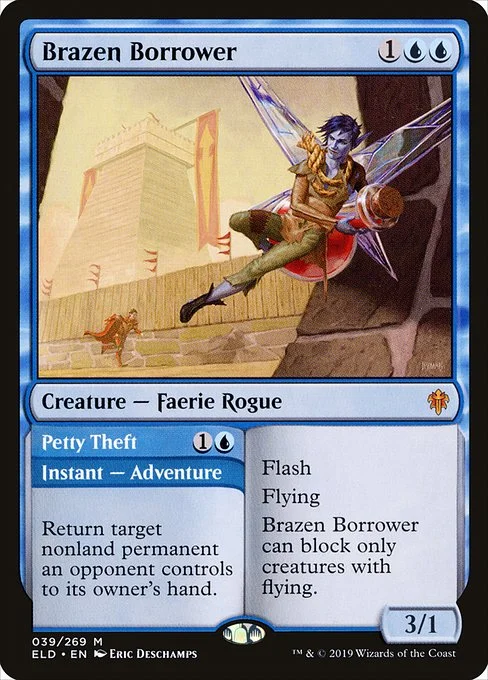 can bounce most permanents, including Leylines. Sometimes the opponent actually cannot recast it due to not running black mana. Sometimes they could recast it but one turn of graveyard access is enough for you to win. And if you pressure them enough, they might not be able to justify casting it.
can bounce most permanents, including Leylines. Sometimes the opponent actually cannot recast it due to not running black mana. Sometimes they could recast it but one turn of graveyard access is enough for you to win. And if you pressure them enough, they might not be able to justify casting it.
Specific matchups
Green Devotion
This is the second most popular deck in the format. I don’t think I’ve seen it played at our store. Our sideboard is weak against them since we’re focusing so much on anti-aggro. If you do face them: their thing is to ramp a lot and then cast a huge thing that wins the game. For example:
Storm the Festival
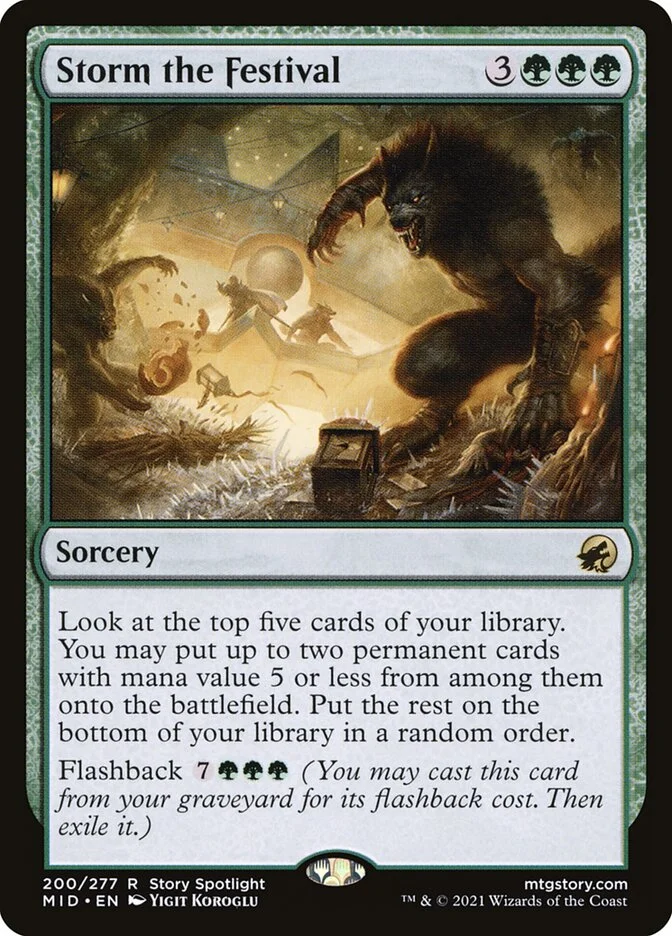 .
.
The majority of their “bombs” are noncreature spells.
Negate
 these. Check with them about how much mana they have or can make before you
Spell Pierce
these. Check with them about how much mana they have or can make before you
Spell Pierce
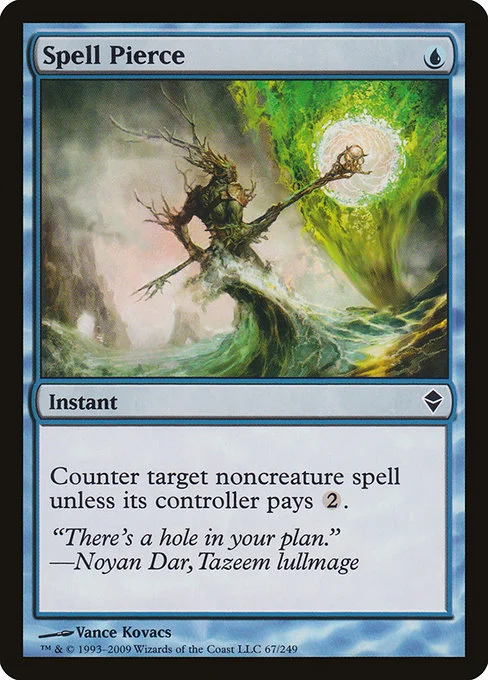 .
.
Out: 2
Pieces of the Puzzle
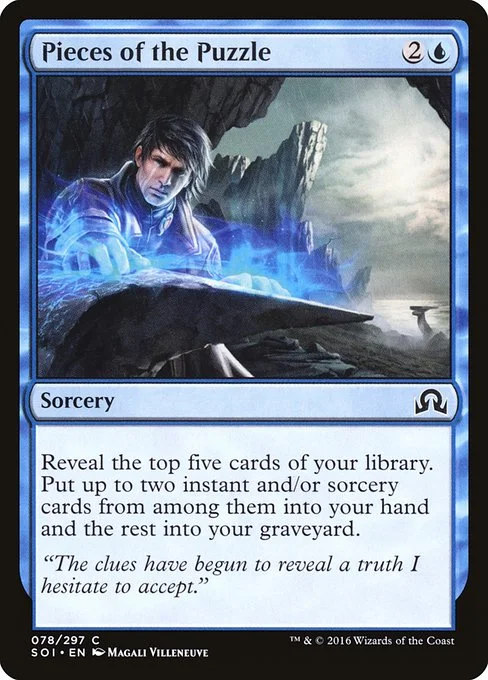
In: 2
Negate

Rakdos Midrange
This is the most popular deck in the format. It’s pretty expensive so it’s going to be underrepresented but I think we have one player on it.
Their premier threat is
Sheoldred, the Apocalypse
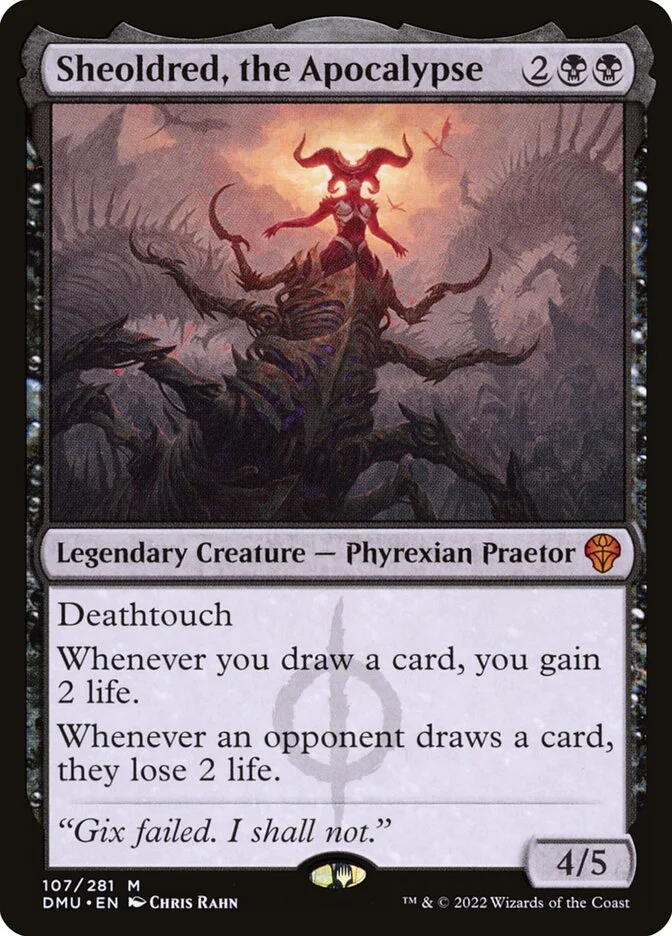 . Save
Lighting Axe
. Save
Lighting Axe
 for this unless you expect to win before their fifth turn since that’s when they’ll start drawing cards → gaining life → becoming ~unkillable via just having the Sheoldred.
for this unless you expect to win before their fifth turn since that’s when they’ll start drawing cards → gaining life → becoming ~unkillable via just having the Sheoldred.
They have a lot of removal and can generally drag us into a long grindy game. We take out things that aren’t impactful enough and bring in things that let us clog up or wipe the board.
OUT: 1
Galvanic Iteration
 , 4
Pieces of the Puzzle
, 4
Pieces of the Puzzle
 , 1
Opt
, 1
Opt
 , 4
Treasure Cruise
, 4
Treasure Cruise

IN: 3
Young Pyromancer
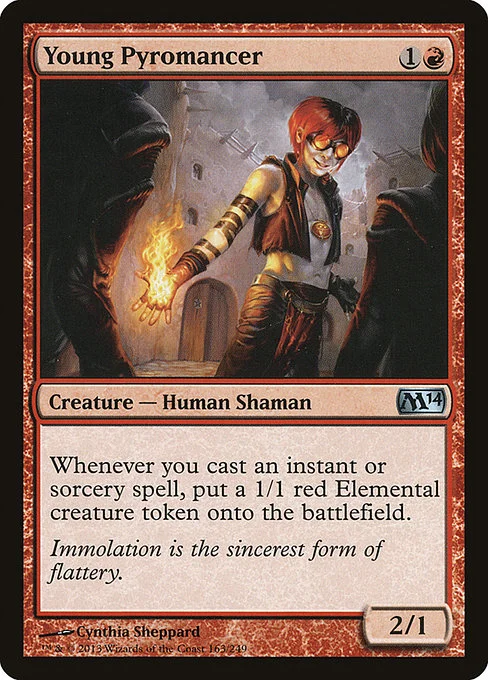 , 2
Negate
, 2
Negate
 , 2
Abrade
, 2
Abrade
 , 1
Crackling Drake
, 1
Crackling Drake
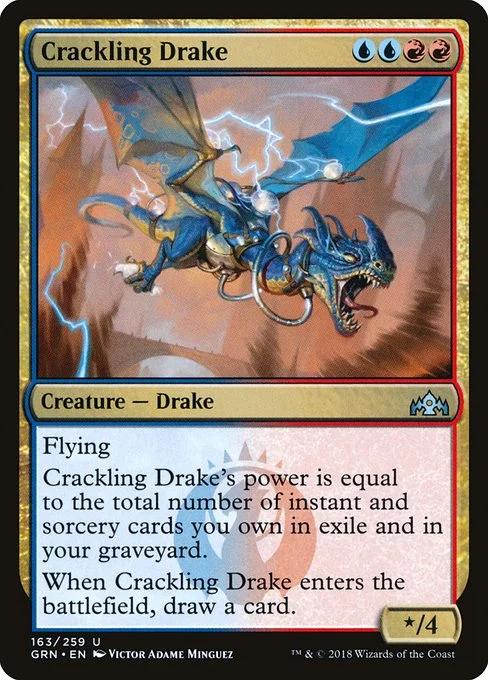 , 2
Brotherhood’s End
, 2
Brotherhood’s End
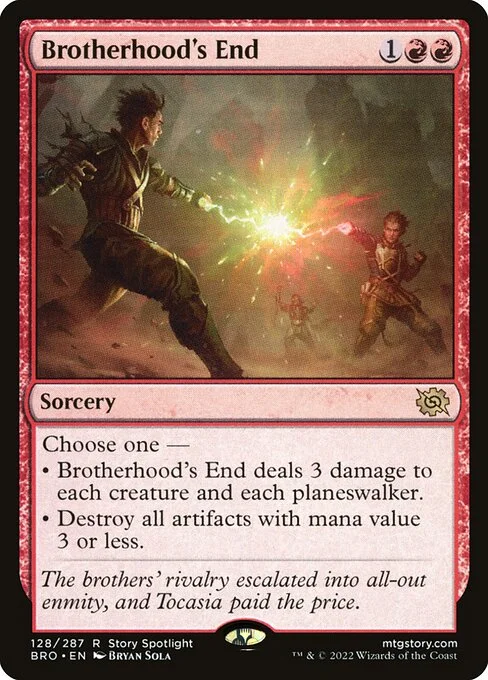
This might be “over-boarding”; feel free to do less if you want.
White Humans / Weenies
This is my deck! Bring in removal, especially boardwipes. Other than
Brave the Elements
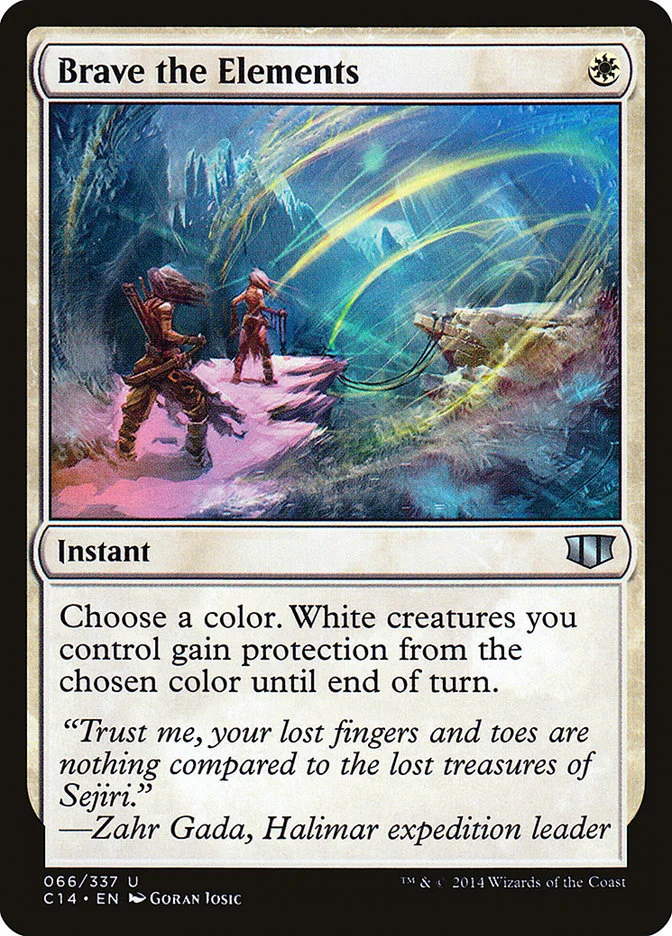 (and some activated abilities on creatures) this deck plays at sorcery speed. Expect them to dump their hand into play quickly and to have minimal followup if you boardwipe. This matchup is about surviving the first few turns
(and some activated abilities on creatures) this deck plays at sorcery speed. Expect them to dump their hand into play quickly and to have minimal followup if you boardwipe. This matchup is about surviving the first few turns
Take out spell pierces and trim some copies of more expensive spells.
IN: 2
Brotherhood’s End
 , 3
Fry
, 3
Fry
 , 1
Rending Volley
, 1
Rending Volley
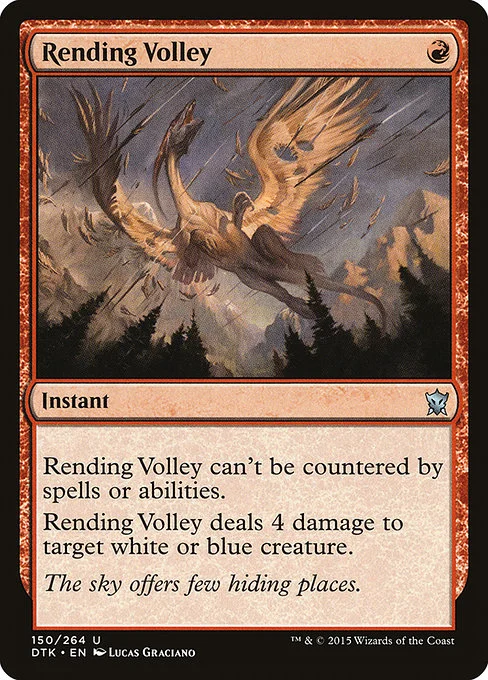 , 2
Abrade
, 2
Abrade

OUT: 3
Spell Pierce
 , 2
Treasure Cruise
, 2
Treasure Cruise
 , 2
Pieces of the Puzzle
, 2
Pieces of the Puzzle
 , 1
Chart a Course
, 1
Chart a Course
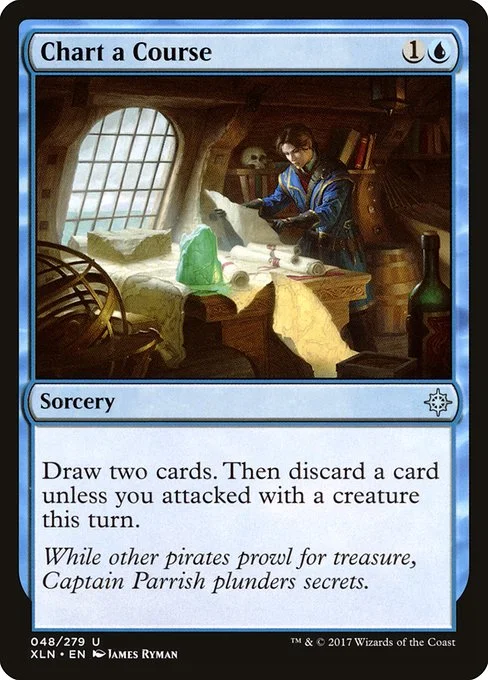
U Spirits
Know what their cards do beforehand. Here is an archetypal decklist; [take a look][U Spirits Decklist]
They’re going to try to play one spirit, put
Curious Obsession
 on it, then attack like ten times with it, using the extra cards to protect the spirit and counter your stuff. This is only good if they’re able to do combat damage to you. Their creatures are pretty bad if you aren’t surprised by them.
on it, then attack like ten times with it, using the extra cards to protect the spirit and counter your stuff. This is only good if they’re able to do combat damage to you. Their creatures are pretty bad if you aren’t surprised by them.
The stack is FILO. If you try to use a lighting axe to kill something and the opponent responds by casting
Rattlechains
 , then the Rattlechains will resolve first. Then its’ ETB hexproof-granting ability will go on the stack also ahead of the lighting axe, and by the time the axe resolves the target will have hexproof and so not get axed.
, then the Rattlechains will resolve first. Then its’ ETB hexproof-granting ability will go on the stack also ahead of the lighting axe, and by the time the axe resolves the target will have hexproof and so not get axed.
They’re allowed to “level up” the
Ascendant Spirit
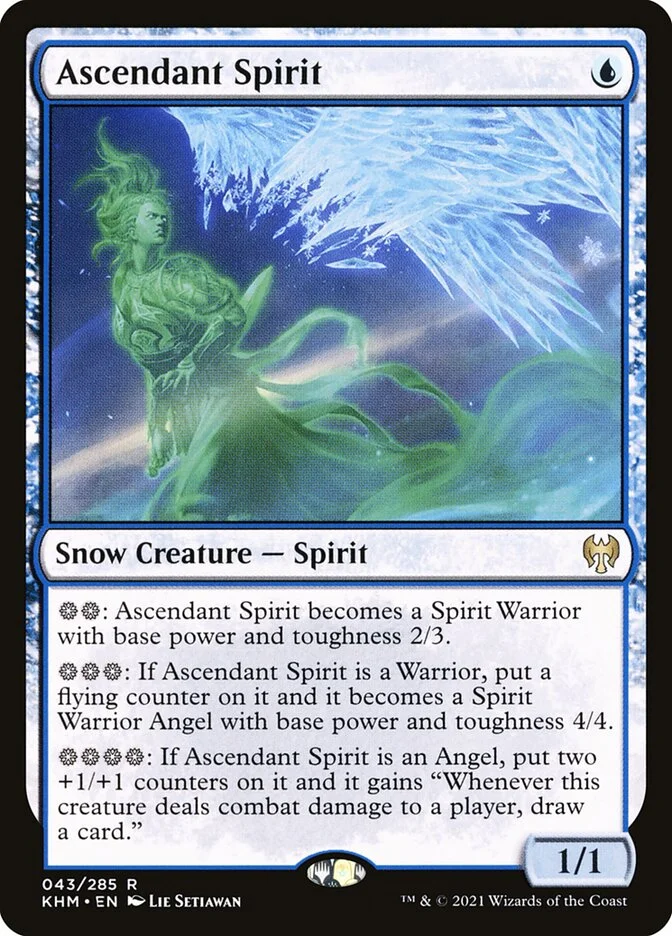 at instant speed. Doing so uses the stack.
at instant speed. Doing so uses the stack.
Your gameplan is the same as always:
survive the early turns as you get set up
flip a thing in the ice or reanimate some phoenixes for the win
Since their gameplan leads to them drowning in cards, you’ll want to kill their stuff. Do this EITHER when they are tapped out or right after they declare attacks.
Remember that
Mystical Dispute
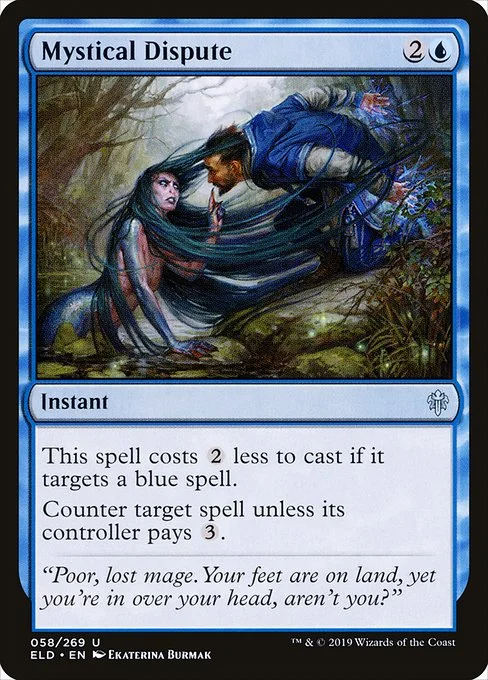 counters everything in their deck for one mana. If you want to prepare even further, we could get you more of them.
counters everything in their deck for one mana. If you want to prepare even further, we could get you more of them.
I think
Thing in the Ice
![Thing in the Ice {1}{U}
Creature — Horror
Defender
This creature enters with four ice counters on it.
Whenever you cast an instant or sorcery spell, remove an ice counter from this creature. Then if it has no ice counters on it, transform it.
0/4
[Transforms into: Awoken Horror]](../../images/phoenix-sideboard/soi-92-thing-in-the-ice.webp)
![Awoken Horror
Creature — Kraken Horror
When this creature transforms into Awoken Horror, return all non-Horror creatures to their owners' hands.
7/8
[Transforms from: Thing in the Ice]](../../images/phoenix-sideboard/soi-92-awoken-horror.webp) is worse here since it cannot block flyers.
is worse here since it cannot block flyers.
IN: 2
Brotherhood’s End
 , 3
Fry
, 3
Fry
 , 1
Rending Volley
, 1
Rending Volley
 , 2
Abrade
, 2
Abrade
 , 1
Mystical Dispute
, 1
Mystical Dispute
 , 1
Crackling Drake
, 1
Crackling Drake

OUT: 1
Galvanic Iteration
 , 4
Thing in the Ice
, 4
Thing in the Ice
![Thing in the Ice {1}{U}
Creature — Horror
Defender
This creature enters with four ice counters on it.
Whenever you cast an instant or sorcery spell, remove an ice counter from this creature. Then if it has no ice counters on it, transform it.
0/4
[Transforms into: Awoken Horror]](../../images/phoenix-sideboard/soi-92-thing-in-the-ice.webp)
![Awoken Horror
Creature — Kraken Horror
When this creature transforms into Awoken Horror, return all non-Horror creatures to their owners' hands.
7/8
[Transforms from: Thing in the Ice]](../../images/phoenix-sideboard/soi-92-awoken-horror.webp) , 2
Treasure Cruise
, 2
Treasure Cruise
 , 2
Pieces of the Puzzle
, 2
Pieces of the Puzzle
 , 1
Chart a Course
, 1
Chart a Course

Want to keep
Thing in the Ice
![Thing in the Ice {1}{U}
Creature — Horror
Defender
This creature enters with four ice counters on it.
Whenever you cast an instant or sorcery spell, remove an ice counter from this creature. Then if it has no ice counters on it, transform it.
0/4
[Transforms into: Awoken Horror]](../../images/phoenix-sideboard/soi-92-thing-in-the-ice.webp)
![Awoken Horror
Creature — Kraken Horror
When this creature transforms into Awoken Horror, return all non-Horror creatures to their owners' hands.
7/8
[Transforms from: Thing in the Ice]](../../images/phoenix-sideboard/soi-92-awoken-horror.webp) in? Do what you think is best, of course. I’d look into running more
Crackling Drake
in? Do what you think is best, of course. I’d look into running more
Crackling Drake
 after all and bringing them in for this, I think. It even lives through
Brotherhood’s End
after all and bringing them in for this, I think. It even lives through
Brotherhood’s End
 !
!
Generic Control
Take out burn spells such as
Spikefield Hazard
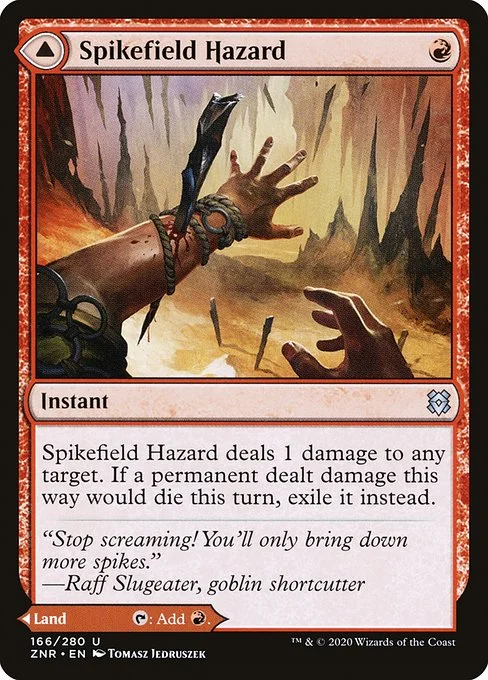
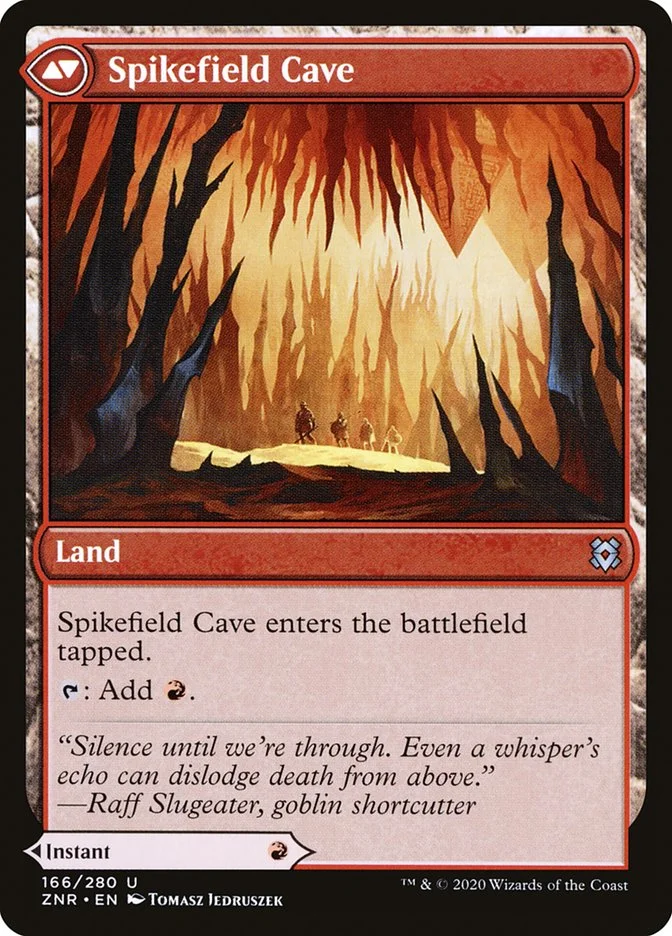 &
Fiery Impulse
&
Fiery Impulse
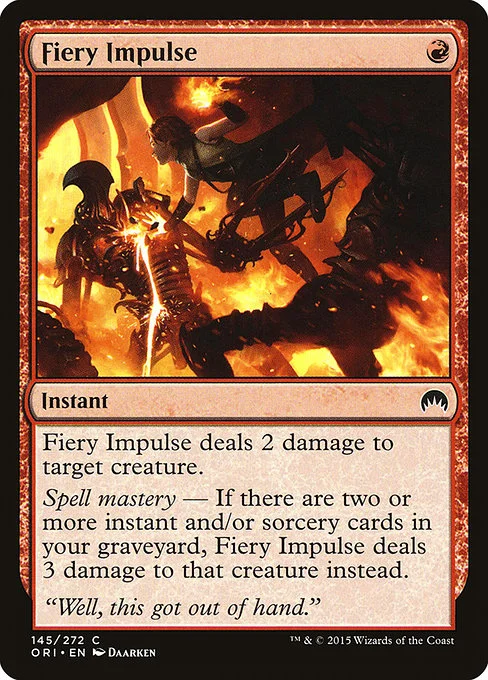
Bring in counterspells and things that generate value e.g.
Crackling Drake
 &
Young Pyromancer
&
Young Pyromancer

Generic Aggro
Take out expensive spells that you won’t have time to cast before dying. Feel free to take out one of each of a few things.
Bring in all the removal: burn spells, boardwipes. Remember that if your third noncreature spell is
Brotherhood’s End
 , you could wipe their board and then get all your Phoenixes back in that same turn
, you could wipe their board and then get all your Phoenixes back in that same turn
Generic Combo
Burn spells out
Counterspells in
Convoke / Loxodon Hierarch Aggro
Burn and boardwipes in
Expensive spells out
Conclusion
Good luck!
